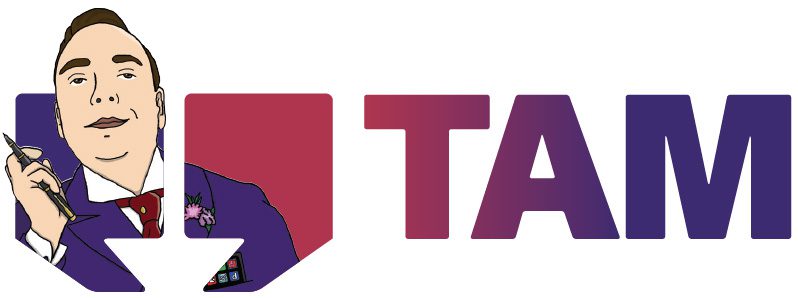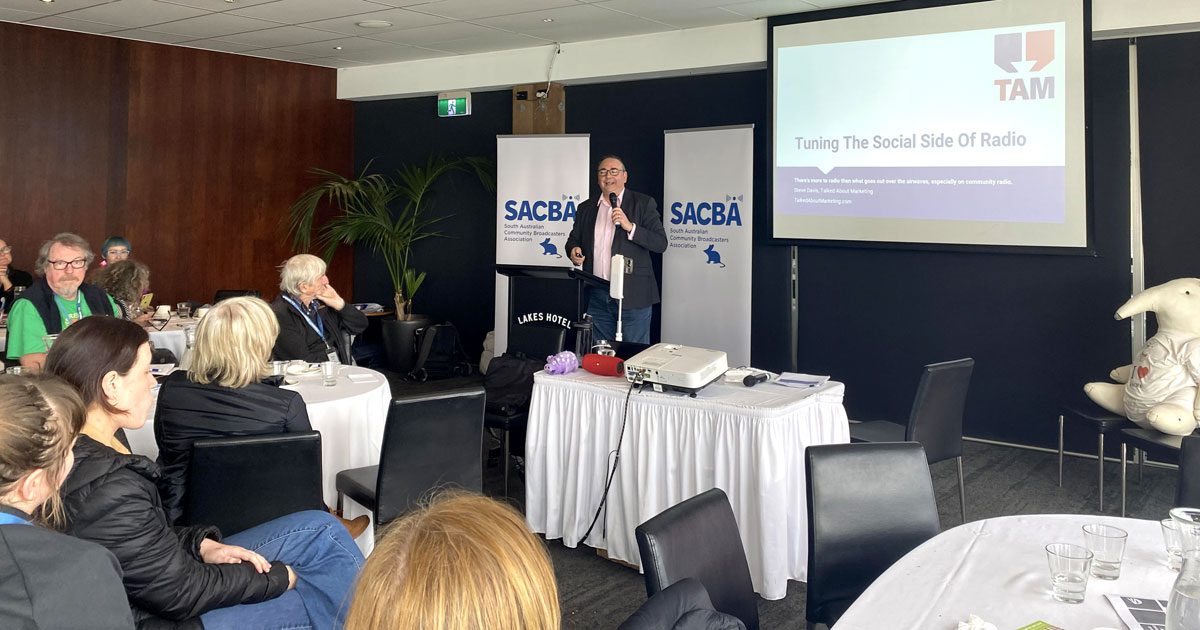Radio is a medium where magic happens and then it's gone, which is why I was asked to speak at the SA Community Broadcasters Association state conference about the social side of radio; the other dimension where social media can store and share our many, wonderful, otherwise-elusive moments.
I promised attendees I would share some of my notes here in the hope they'll be of benefit for promoting their community radio efforts but also to help you if you're podcasting or just trying to get your brand "talked about".
The short version for my approach to amplifying your promotional efforts means attending to the following steps:
- Be clear about who your ideal listener or customer is - especially taking time to be mindful of their motivations and needs that are relevant to your program or service
- Remember that preparing and crafting your content (radio program, blog post, event, etc) is only half the job - the other half is active promotion
- Be clear about how your content can help, inform, or entertain your audience
Amplifying the goodness
After opening with a clip of a Guy Sebastian interview that was shared with The Adelaide Show Podcast by Jordan McKenna who'd interviewed "The Fro" on BBB-FM, I made the point that golden moments like that come and go in radio all the time and if only our ideal listeners could be made aware of them, they'd more actively tune in and follow us.
Here are some parts of the transcript of the opening section, recorded on my iPhone using the Otter app.
Jordan was very proactive so I welcomed him because here's the thing. There is so much goodness happening on our community radio stations. And they happen and then they're gone. And it's a crime to me that this happens.
It's like the title from one of my favourite books ever The Unbearable Lightness of Being. The title sums up what it's like to work in radio, at least up until this digital age, where things happen and they're gone.
And so the whole idea for this workshop came from thinking about that and how we can amplify our efforts for that work we put in, to capture attention so that more people can know about it, because people don't know what they don't know.
I was having dinner with a mate last night and he reminded me because he's been with me through the whole career in radio and he said, you know, you did some interesting stuff back in the day (we're talking the late 80s and 90s before the internet was made available on mass and there was no social media).
There I was at 5MU in Murray Bridge, doing interviews with the likes of Bert Newton. Ruth Cracknell, and Sir David Attenborough. Would you believe that?
And the thing is, the aching thing about it is, there would have been people driving around in Murray Bridge or Victor Harbor or Nuriootpa or Mount Barker. having absolutely no idea (if they weren't listening) that on their local radio station right now, Sir David Attenborough was talking to them, to their community.
But once it had gone, it had gone.
I mean, my mum recorded it, she's my archivist, but for all intents and purposes, it had gone.
If only there'd been social media tools back then because if I'd had those then, my goodness, I would have milked those things for all they were worth, non-stop, everywhere, building my tribe, but also building a tribe for my station, and for my community.
But how have them all right here, and they're free. And that's what we want to explore today.
Defining your "Gladys"
In my talk, I defined the ideal listener we had created during my time at 5DN.
Gladys was a woman in her mid-forties, in the north eastern suburbs of Adelaide who had a car but sometimes took public transport, loved her football, played bridge, and also loved collecting titbits of information to drop into conversation with her friends so they'd marvel at her knowledge.
Having Gladys defined like this meant we could sell lots of advertising to businesses that wanted to sell to someone like her but it also meant we had drive and focus every time we opened a microphone.
Do you know your "Gladys" when you start writing a blog post or planning a program or building an item to share in social media?
One of the first things we should all do if we want our marketing activity to be efficient and effective is to become really clear about the persona of each and every ideal listener or customer we are striving to please.
These personas can be built from your knowledge of actual, valuable, reliable, passionate listeners or customers, or pieced together after some research and reflection.
What we want to know is not only some demographic features about them (age, family status, location, gender, education, income, etc), but also some of their habits and hobbies and worries and dreams.
The more we have a picture of their aspirations and needs, the better we can communicate with them.
As author of The World's Best Buyer Persona System: The Buyer Persona Reimagined: It's Not Who They Are but HOW THEY THINK!, Stormie Andrews, notes, the purpose of building these personas is not the capturing of this information but of getting clarity about how we can communicate with them.
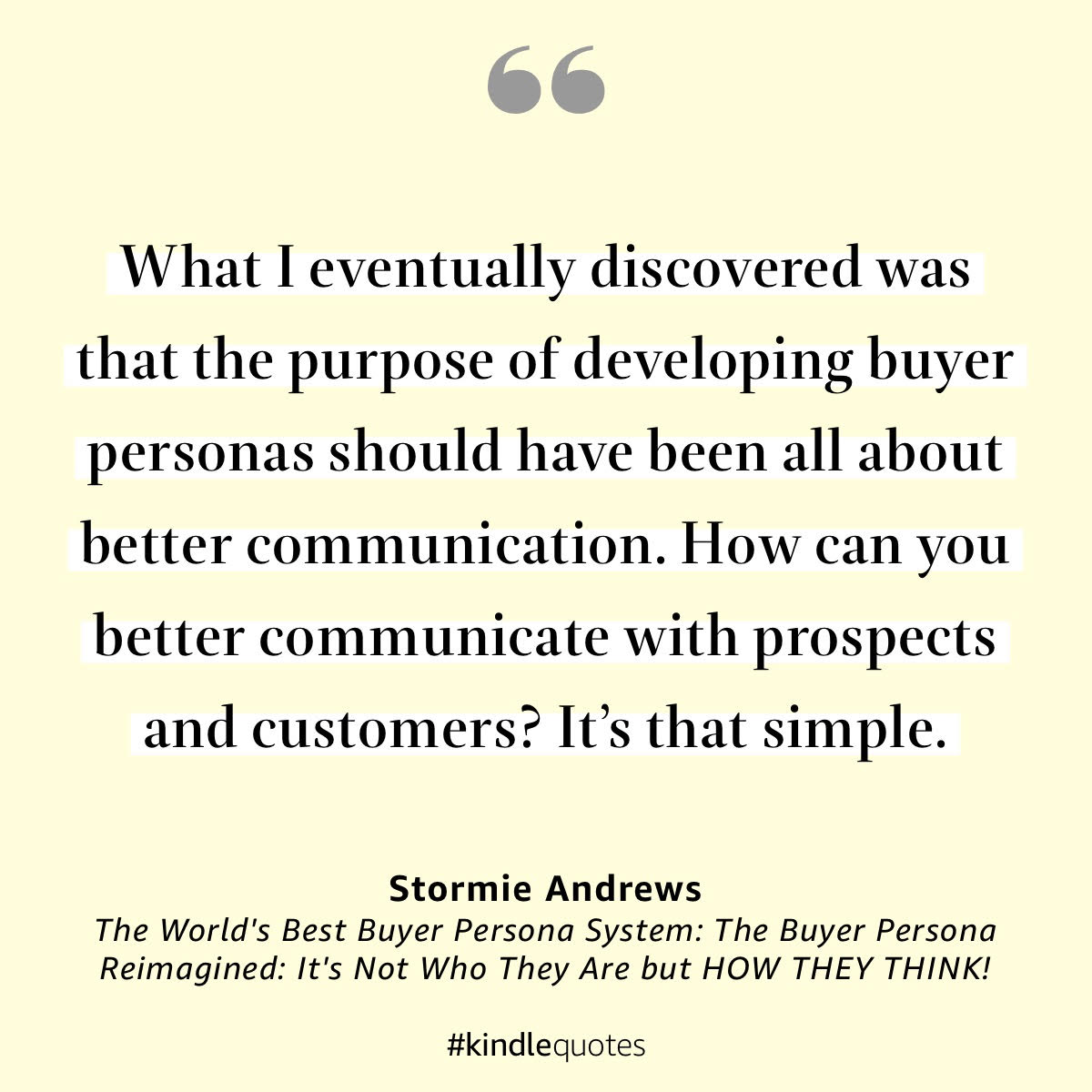
If you'd like an "ah ha" moment, try writing an engaging email to send to all your friends. Then try writing one to a specific friend. I think you'll find the specific one is better, stronger, sharper.
It's the same with your marketing communication.
When you have a specific "Gladys" you are performing for, writing for, engaging with, you can be much more relevant and memorable.
My advice is to start with one but note that most programs or organisations have three to five ideal listener/customer types who represent the field of valuable audiences. But starting with one will bring you focus worth it's weight in gold. It will help you say goodbye to bland generalisations and help you draw us closer to your world and your enterprise.
The social side of radio is the other half of the production equation
One of the insights that surprises most of us who love producing content (radio programs, podcasts, blogs, etc) is that preparation and production only make up half of the job.
That's right. While our personality types often drive us immediately on to the next piece of new content, we are undermining our reach and effectiveness if we don't double down and do the hard yards of making our content available and palatable to our audiences.
People don't know what they don't know, so it's our job to enlighten them with our helpful, informative, and/or entertaining content.
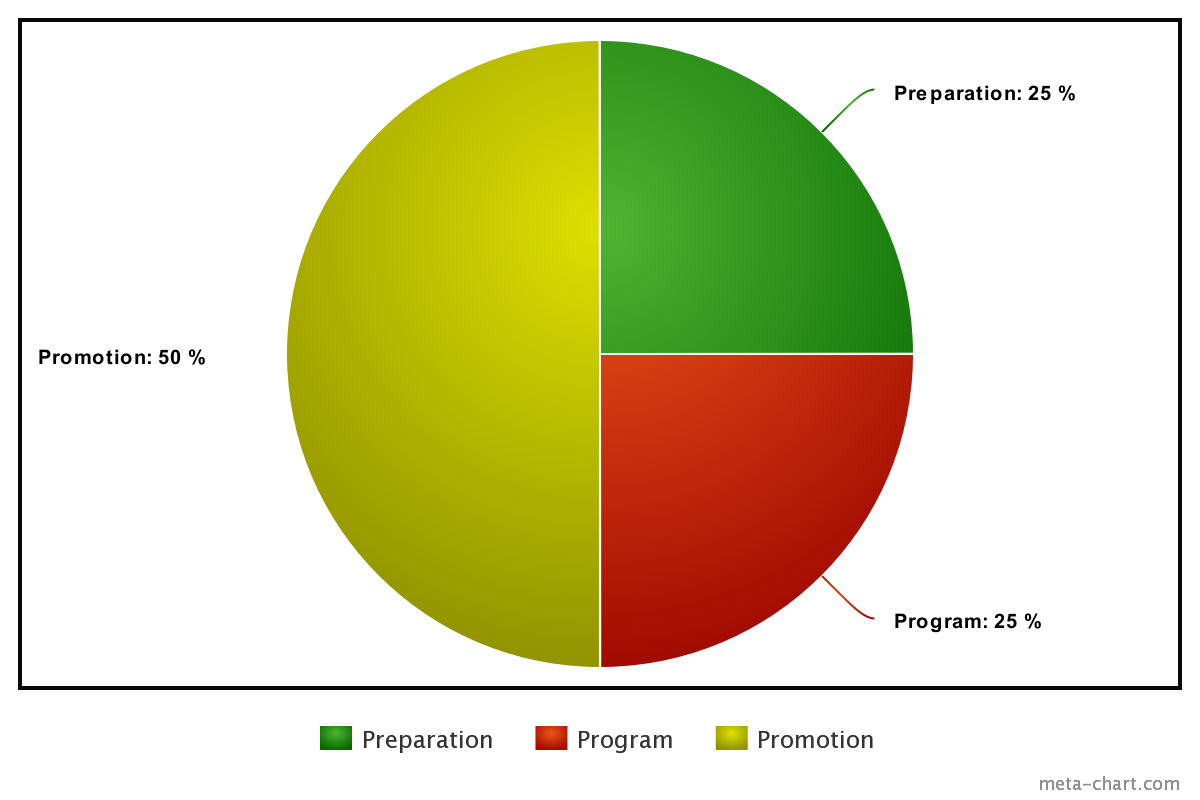
I had some people at the SA Community Broadcasters Association conference specifically thank me for this pie chart that I'd whipped up to make this point.
It is a stern reminder to all of us, myself included, that we are not entitled to bemoan people not knowing about our great content, if we haven't dedicated time or resources to thoughtfully expose our "personas" to it.
Some of the preparation effort happens before we share our content with the world - asking for input and questions to blend into our work to keep it relevant and helpful - but most of it happens after publication.
This is where sharing links to our content via our newsletter, station promos, and social media channels, kicks into gear.
Aim for engagement - be helpful, informative, and/or entertaining
We're all busy and nobody owes us their attention; we must earn it.
One of the key ways to set up our efforts for success is to set the "True North" of our content creation compass to "Engagement".
All the social media channels have moved to a model where they honour and reward content that inspires other uses to comment, to keep the conversation going.
For the social media channels, this keeps eyeballs on their properties so they can push more advertising to keep their cash registers ringing.
For us, this means that when we share content it needs to be crafted in a way that is helpful, informative, and/or entertaining for our Gladys.
Social media is not effective when we use it as a dumping ground for ads or boastful posts.
I noted 10 types of social media object that you can experiment with, namely:
- Ask for questions - ask your Gladys to give you questions to address or to put to upcoming guests
- Share quotes - extra poignant quotes from your work and share illustrated versions across your media channels to inspire people to comment or share
- On air snaps - share photos of your guests or your team during the creation phase and share - you'll normally find guests with then "on share" such content thus pushing your work into new social circles
- Audio snippets - particularly for radio people and podcasters, sharing short audio snippet videos can be engaging, triggering people to comment and enticing them to go back and listen to the whole program
- Hashtags - making sure your captions in social media posts include at least 3-5 hashtags to aid discovery across the network, eg, help people #discover and #share your #socialmedia posts by including #hashtags
- Tag people or organisations - when writing a social media caption referencing a guest, a supplier, a customer, etc, make sure you convert that reference to a tag so they are alerted to the mention and can easily "on share" your work, eg, when I share the post relating to this article on Facebook I will type @sacba and Facebook will automatically transform that into a clickable link that says South Australian Community Broadcasters Association - SACBA, and whomever controls that account will be pinged and they'll hopefully like, comment, and share it (hint)
- Check ins - instead of just sharing a social media post, if your content or guest relates to a public location, see if your social media channel allows you to add that to the post because that will help expose your content to users in the geographical area of the "check in" (note, I've checked in to relevant places on the other side of the world - it not only gets extra awareness in a different locale but it can surprise your local audience and inspire intrigue)
- Livestream - doing short livestream videos before creating or launching content can arouse interest and awareness because the social media platforms still give extra priority to such content because it keeps people glued to their channels
- Cross promote - by putting a spotlight on related, relevant, but non-competitive businesses or organisations or people, you double the number of players with a vested interest in promoting the resulting content - we did a lot of this with Indaily in the early days of The Adelaide Show Podcast helping the fledgling online newspaper build awareness and using our relationship with them to create a sense of gravitas in our endeavour
- Blog - every radio program or podcast episode should usually have a wealth of background material that you've compiled and this should be fashioned into a helpful companion piece in the form of a blog article so that it lives forever, helping Google help new audience members discover you (as I'm demonstrating here, turning a talk into a blog post)
There was more nuance covered in the talk but hopefully that list will prompt memories for attendees and still be helpful to you if you weren't there. It was delivered earnestly, as this photo by Paul Davies from Radio Adelaide shows. 😉
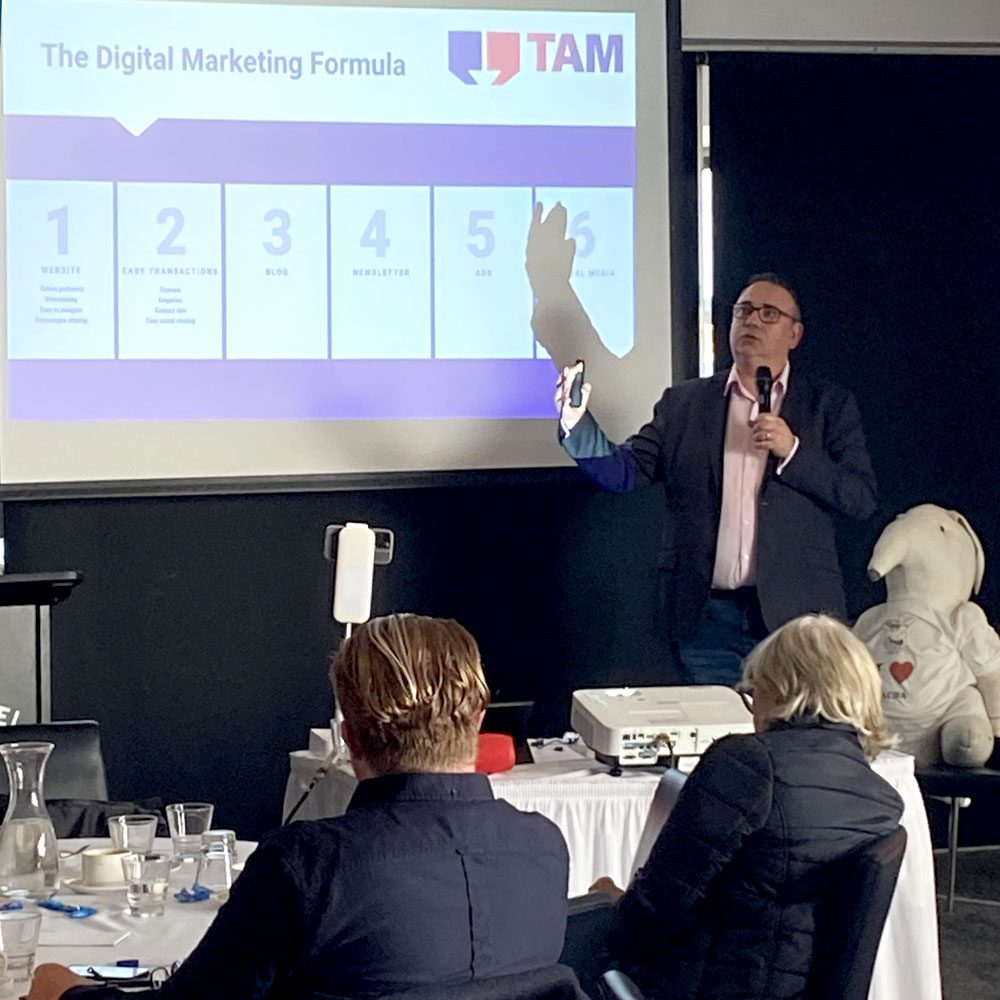
A final thought to consider is my plea to make sure you trigger engagement with your social media posts for the net good of your community.
The downside of social media organisations focussing on rewarding engagement is that the most intense chains of comments and conversation tend to be those fuelled by hatred and anger.
If we can nurture our audiences to reflect on shared experiences and build helpful, enjoyable, thought-provoking narratives around our content, we'll be using these powerful media for good.
Asking our Gladys which of the options we've shared she likes best, or asking her to share a story about the last time something similar happened to her (and how she solved the problem), are all ways that make us worth knowing and worth talking about.
We've been deliberately weaving blog posts into our usual mix of marketing articles that cover deeper, more reflective content so that you can look after yourself and not just your business (or radio station). If you're curious, this one might be worth a read: A marketer’s search for meaning: Time to decide what’s important.
And if you haven't explored community radio stations available to you, or locally produced podcasts, please do so. There is gold to be found and there are typically voices to be hear that are not the usual suspects. Enjoy.
DISCLAIMER: Steve and Talked About Marketing work closely with Adelaide-based community radio station, 5mbs.com.
